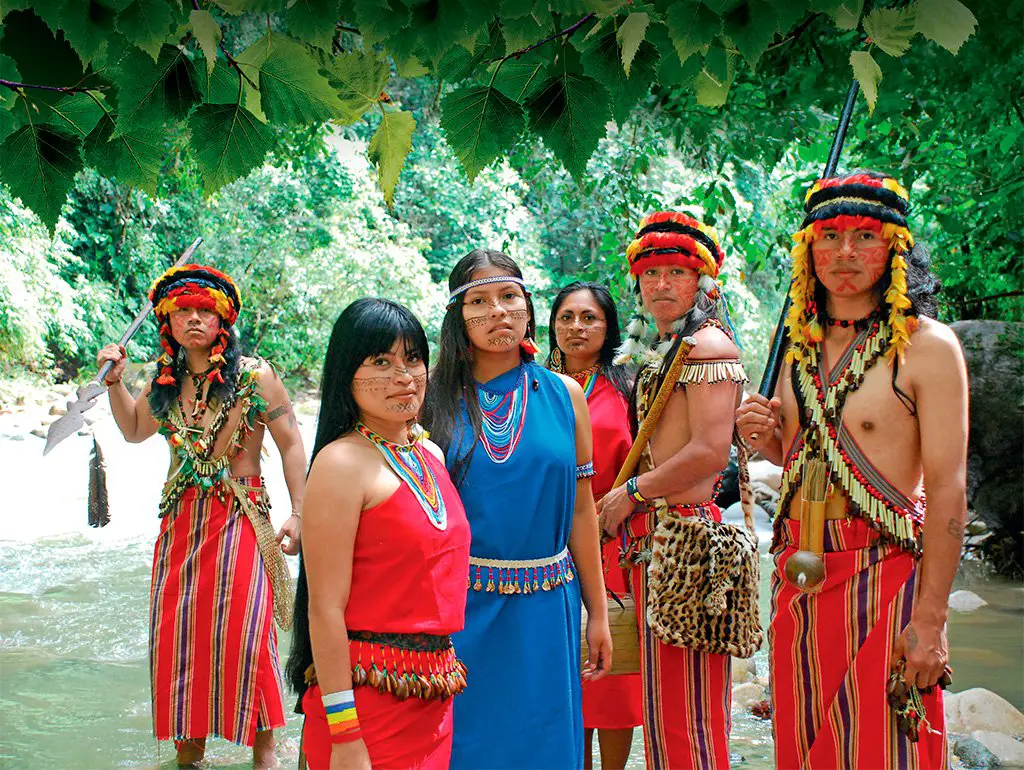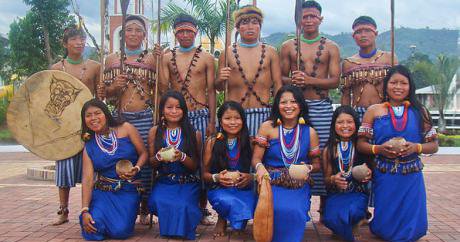Ecuatorian Indigenous
The Tsáchila

They find spaces in their forests that inspire them to evoke they myths and legends of their nationality. Those stories are related to elements of nature and that is why trees, animals, waterfalls and rivers become his favorite corners.

It is a tsáchila who was denied the hand of his fiancée and that upon receiving the news he had a disappointment that led him to take refuge in the forest.
The girl approached the ‘vision’ and immediately had contact with the tsáchila. The paranormal situation scared her and when she returned home she told her mother, who to confirm the version went to the forest where she found a scene that she did not imagine, according to the legend that Calazacón tells. The mother observed that a spirit took the form of a tiger that immediately fled the place with an unknown direction.
Legend of the Shamans fight

The most popular legend in the seven communes is the shaman fight. The tsáchila Abraham Calazacón remembers that his grandparents told him that this brawl was to measure powers. In one of those fighting rituals they gave a shaman the 'forgetting herb', which made him lose consciousness. No matter how much they tried to recover his normal state using a tobacco that was shaped like the tail of a monkey, they could not get him out of the trance.
He say that finally the Shaman died and since dad episode a curse was spread through a commune that soon exterminated the entire population.
Legend of titiri and achiote
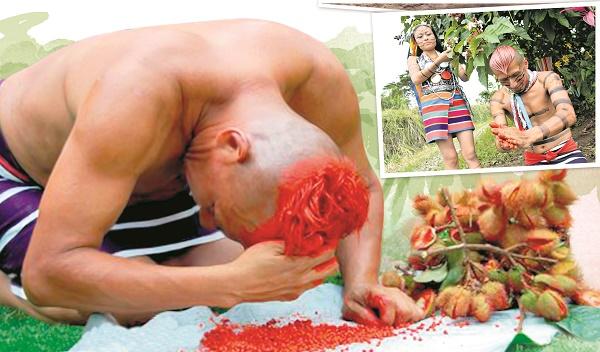
It is said that the tsáchilas did not always have their bodies painted with annatto.
It is said that there was a tsáchila called Titiri. He was as lightning fast and no one could reach him.
It was considered the fastest of all time.
Titiri was in charge of taking the messages to all the families of the Tsáchilas community.
Thus, one day and on one of his many and rapid trips, he stopped in an undetermined place.
His “mandatory” stop was due to a plant in the sector that caught his attention.
This one had beautiful flowers and very striking clusters, of which some were open and showed those ruby-colored seeds.
Those clusters were annatto fruits, which gleamed in the light of the blazing sun.
Titiri took one of the clusters in his hands and pressed one of the fruits to see those striking seeds. They were so beautifully colored that it distracted him and he loved it.
His fingers turned red on contact with these seeds, which made him rub them on his belly to clean them, but to his surprise that beautiful color was not lost and rather adhered to his skin.
He liked that shade so much that he decided to paint his entire body and even his hair.
According to the story, from that day all the tsáchilas paint their body and hair with annatto.
The tsáchila that became the sun
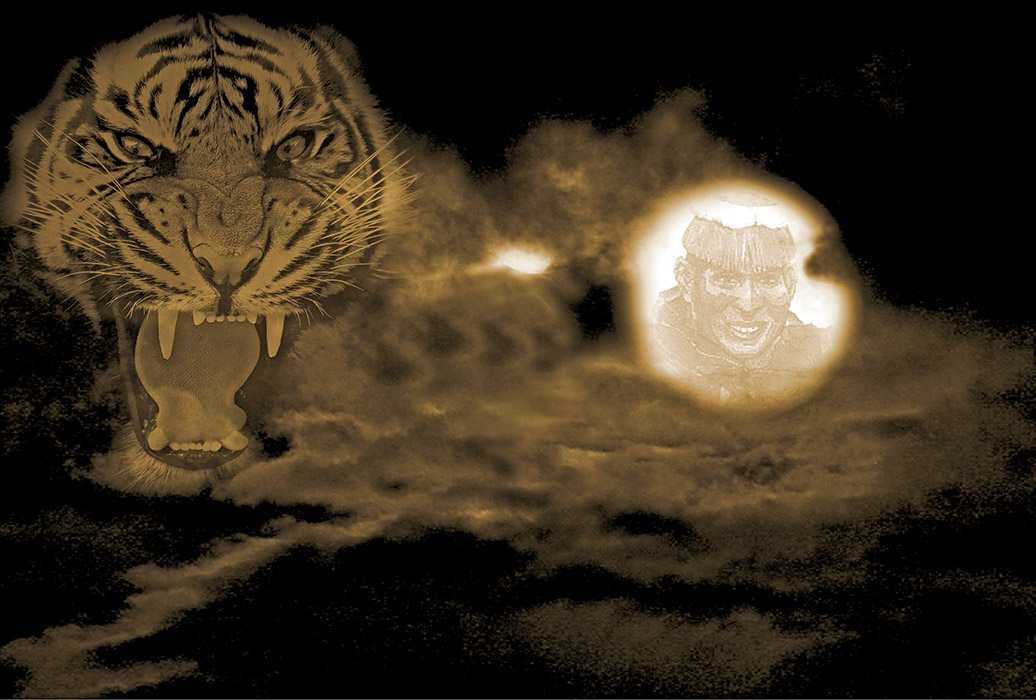
The ancients in Tsáchila, Santo Domingo, say that many years ago, the grandparents of the grandparents could converse with the birds, in the sky where a huge tiger lived with a huge mouth, eyes like lightning, with powerful claws and very fur resplendent, but lived in the dark.
One day, the tiger of darkness was furious and hungry and in one bite he ate the Sun and darkness fell on Earth.
The moon was confused by the disappearance of the Sun, it did not rise either and that was more serious because he could no longer fall in love with its night light. The birds died and the rivers began to dry up because, confused by the rain without the guidance of the celestial stars, it did not fall either.
Thus passed three sad and gloomy days. On the fourth, their surprise was total, they could hardly open their eyes. An incandescent light burned them and it was almost impossible to resist seeing it. There was the sun again, reigning high, reaching all the tsáchilas with its rays. In all its glory, it was there again, but they couldn't bear it.
The elders recalled that the young tsáchila had two eyes and that he was surely giving birth with both. So it would be necessary to light only one. So they threw a great stone into the sky and achieved their goal, they were finally able to enjoy the benefits of the Sun King, who now has only one eye.
The Chachi
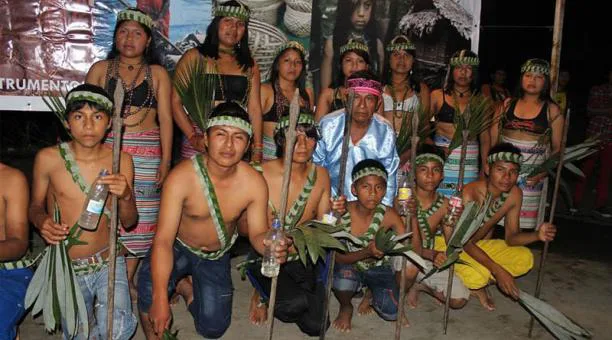
The Chachi village, commonly known as Cayapas, is
located in the jungle area of the province of Esmeraldas, northwest of the Ecuadorian territory. It is one of the few groups that survive on the Ecuadorian coast, with its own culture and organicity.
Myths origin

According to this, God
(dyusapa) modeled five pairs of clay individuals using form
human, in a remote mountain place, east of Quito. Then he spat into their mouths and they jumped into the vigor of the life. They immediately went to the lbana region and were the first Cayapas.
As far as the universe is concerned it seems to be accepted by the
Cayapu that has always existed and, for the same reason, that did not involve an act
CREATION OF THE "WORLD:
WORK OF GOD AND A CHACHI
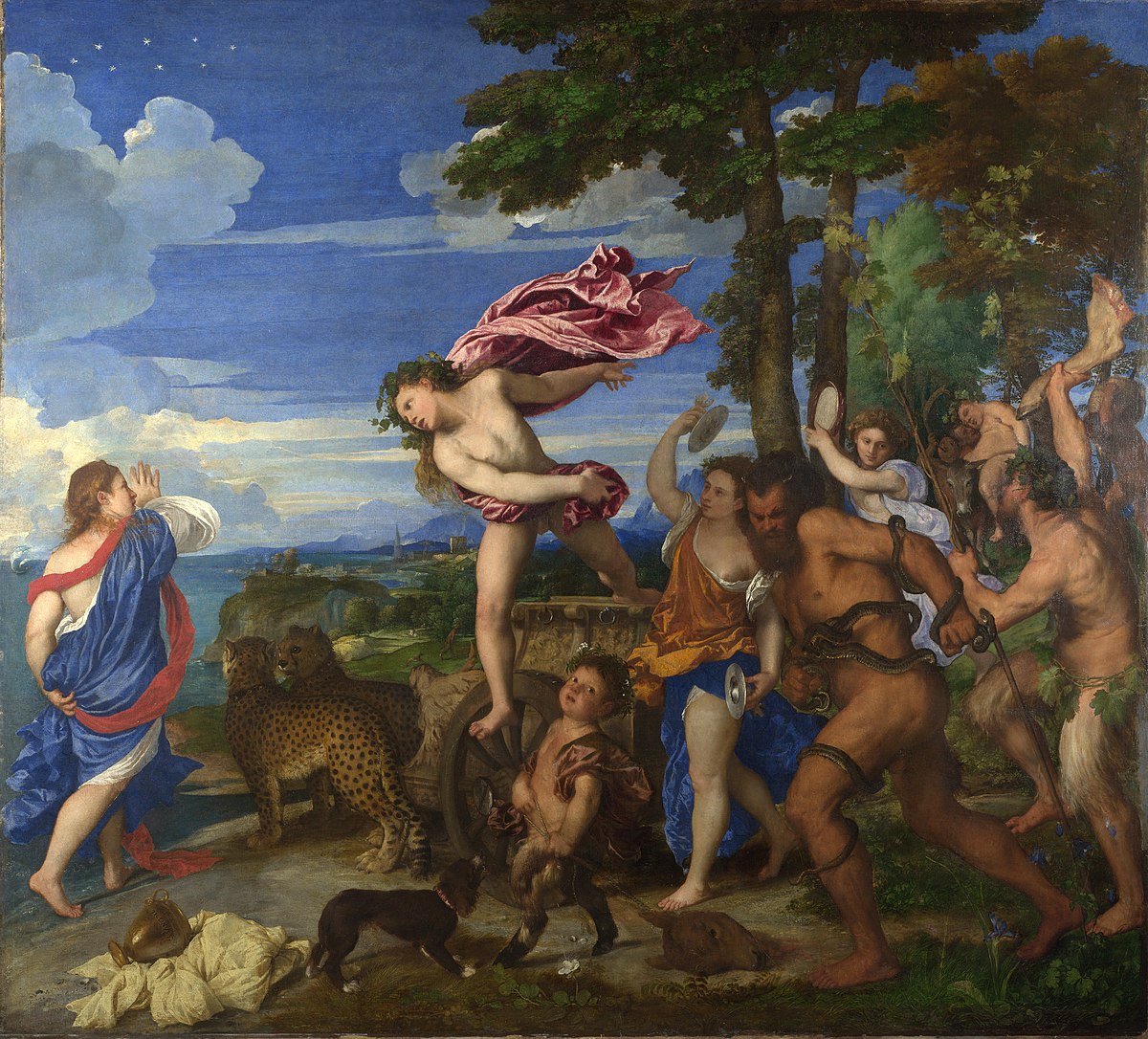
"God has come into this world with Adam, a chachi, on an island.
There was no land, there was only one island. So between them they decided to make the world.
They took a bar and threw that bar into the sea and created the world.
After this they said to each other that it was not fair to both live in the
world, but ask others to accompany them. Saying this they took some mud and made a lord, but it was not possible that he also lived alone. They let him sleep and they took out a rib and they made a woman and he married her and had enough children and they couldn't marry between them because they were all family. God put each. Which different names, so that they could get married, that's why now we are with different last names.
Being in ibarra God said to them: "I have lived so long in
the earth and I want to go up to heaven. "Saying this, he left 20 of them and made them soldiers, saying:" You will come to see some soldiers to take them to war. do this: with the tip of the bar with the knife do "shos'shus, sha-shus" ", and they fell like a few drops of fragrant perfume. They took it and put it as if it were perfume. The first time it was fragrant. The enemies did the same and they got an unpleasant smell. And they all died. "
CREATION OF THE RIVER
Everything we see: the rivers, the trees, that is, all the
nature, that comes from God; I think everyone believes that way. I understand that in the past there were no rivers, so when the Virgin Mary saw that she had no place to wash the diapers, she made the river to wash the child's diapers. The Virgin Mary had created the river.
The Virgin Mary, in the Chachi tradition is a mother who must wash
diapers, but partakes of divine power, creating the river.
In both myths, that of the creation of the universe and that of the creation of the
river, there is a clear relationship between men and divinity. Together, God and man create the universe, together they make decisions to create the rest of mankind.
The Awa
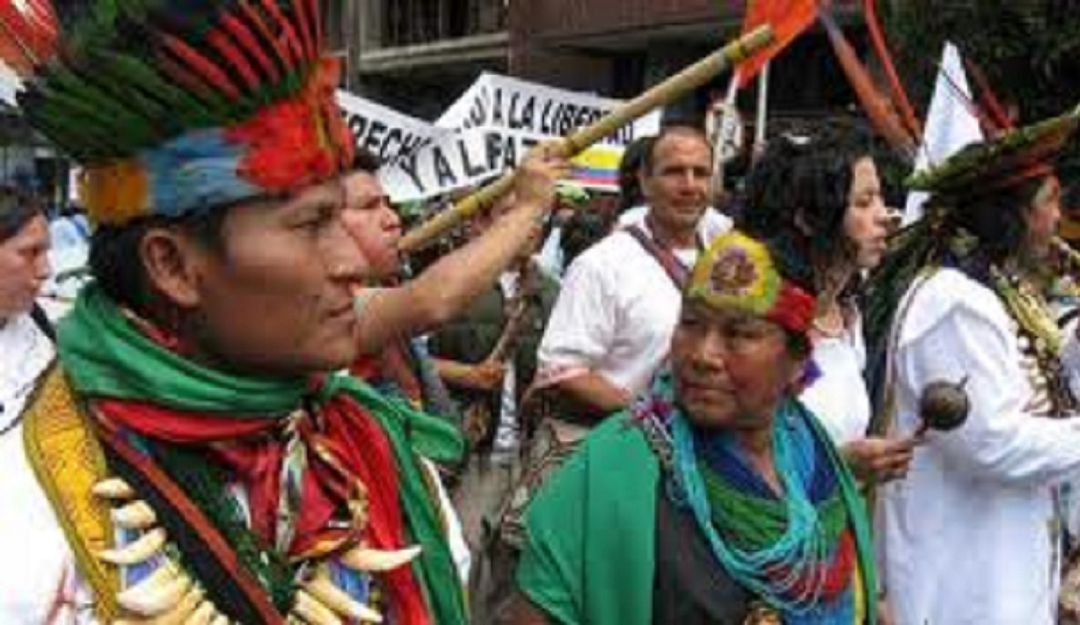
They are Amerindian people or nationality that lives on both sides of the border between Colombia and Ecuador, in the very humid forests of the western slope of the Andes; from the Telembí river, in Nariño, to Carchi, Imbabura, Sucumbíos and Esmeraldas.
MYTH OF THE ARMADILLO OR THE FOUR WORLDS

Have ancestors who walked two natives in the mountains looking for armadillos, they noted then that an armadillo entered a hole that was in the ground, once the Indians escavaron, when suddenly fell to an unknown place, they were lost and surprised and all they did was observe the place as strangers, in the world below they looked at large ants the size of a person and observed squashes that resembled armadillos and say that armadillos and ants ate smoke, and when it got dark in the place there was a woman very beautiful one of the natives look at her and loved her and so went to live together and in that instant collapsed because it had been a rock and says the other Indian left alone and spent the night there and then ants they spoke, one of them said, if you stay here you'll die then I suggested that if he paid a bushel of corn him out, the Indian told him that good and the ant and ra so great that told him to climb on his back and did not open her eyes until she tells him if he could not die, and said that he felt that he would serve until they arrived. Then the Indian opened his eyes and was already on the ground.
PRETTY CHINA.

There lived a lady who had a son, a man; the son worked as a corn planter, the mother was old, but when she was going to leave lunch she made herself comfortable, dressed up well, to look beautiful, because she had fallen in love with her son. The son did not know her; When he returned from work he asked who was arriving and the mother did not answer. After so many visits, he stayed hidden to see who was or where this beautiful woman came from; After a while, the mother, who was an old woman, got up and took off her dress and put on another new good and went to leave the son lunch. The son came out from where he was hiding, went to where the dress that the mother had left was and angrily placed it on the stairs and tore it with the machete; when he was cutting it, blood was leaking from his dress.
Myths Dog cave

The elders say that the cave dog is brave, he boots his eyes, he is small, black, and he eats souls, when a person looks at him, he is tempted, he walks in the mountains and lives in a cave, the body of the cave dog is puyoso , it barks like a real dog and eats animals, when it doesn't feed on souls it wanders all day and night. They say that if a person looks at it, the grave and eats it.
The Quichua

in Ecuador, it is an ethnonym used to designate indigenous peoples from Peru and their emigrants to the current States of Bolivia, Ecuador and remains in Argentina, Chile and Colombia. The name derives from Quechua, a linguistic family extended throughout much of the South American Andean region and related to the Inca Empire.
MYTH ORIGIN AND CREATION
In the myth of the creation of the world, Viracocha, made the construction of everything visible and invisible.
Viracocha began his creative work on the shores of Lake Titicaca, in Tiahuanaco, carving in stone the figures of the first two human beings, the first man and the first woman, that is, the foundations of his work. By giving names to the statues, they came to life, but in the dark, because the god had not yet given light to the earth.
With humans clustered around him, Viracocha made his way to a place called Cosco (next to Cuzco), where he established his first reign, giving one of the repentant men command of the first city and the first empire to exist on the planet. . This first chief, the first Inca designated directly by the divinity was the legendary Allca Huisa, the generator of the long and powerful lineage of the Incas.
Myth of the Ketuvi

Once upon a time there were two friends. One was called Ckella and he wore a yellow shirt with a brown jacket that was too short, and the other friend was called Pepitero because he liked anco pepitas, pumpkin, etc. that she cut with her favorite leather knife.
One day Ckella asked her to borrow her knife:
Can you lend me your knife a little bit, friend? is that I have a hard pumpkin on my ranch and my knife broke. Ckella said and Pepitero lent him without fighting intention
And by the way I bring you the seeds so you can make pumpkin seeds. he added.
Two weeks passed and Ckella did not return the knife in due time, because he was lazy.
Pepitero decided to wait for him in a shortcut on the road. When she saw him she said:
Give me my knife! and Ckella said to him:
I already gave you: I put it in the gallery of your ranch.
Pepitero did not believe him. And stabbed him. Immediately the Pachamama turned Ckella into a bird that ran away screaming:
I already gave you, I already gave you! - what gave rise to its name.
Pepitero was amazed and ran to his ranch, when he arrived he saw his knife in his gallery, he felt very bad then he asked Pachamama to turn him into a bird like his friend, so that he can forgive him for the mistake he made. had committed. The Pachamama complied with the request, and turned it as he wanted into a bird.
The Telesita

Once, in the mountains of SANTIAGO DEL ESTERO, there lived a young Telesfora Castillo, Telesita for those who knew and loved her.
She lived alone, without a family or house to live in. They supposed that she was very poor since she appeared dressed almost in rags and barefoot. She carried a little song of water on her head on some occasions and on others a little firewood.
From time to time she was drawn to the echoes of the music. She loved music and dance, she separated herself from the group of people and she danced alone accompanying the bars of the music, striking her song, she danced marking the steps of the dance with feet so light that she seemed not to touch the ground.
When dawn broke and the party came to an end, everyone saw the telesite return to the forest, until there was another.
The Achuares
They are American Indian people belonging to the Jivaroan family like the Shuar, Shiwiar, Awajun and Wampis (Peru). Settled on the banks of the Pastaza river, Huasaga and on the borders between Ecuador and Peru, the word achuar has its origin in the name of the large palm trees called "Achu" (Mauritia flexuosa) that exist in the various swamps that cover its territory, Achu = Achu palm trees, Shuar = People, hence it becomes "People of the Achu palm tree". Locals translate achuar as a swamp man.
Legends Tsukintza and the origin of the Achuar houses
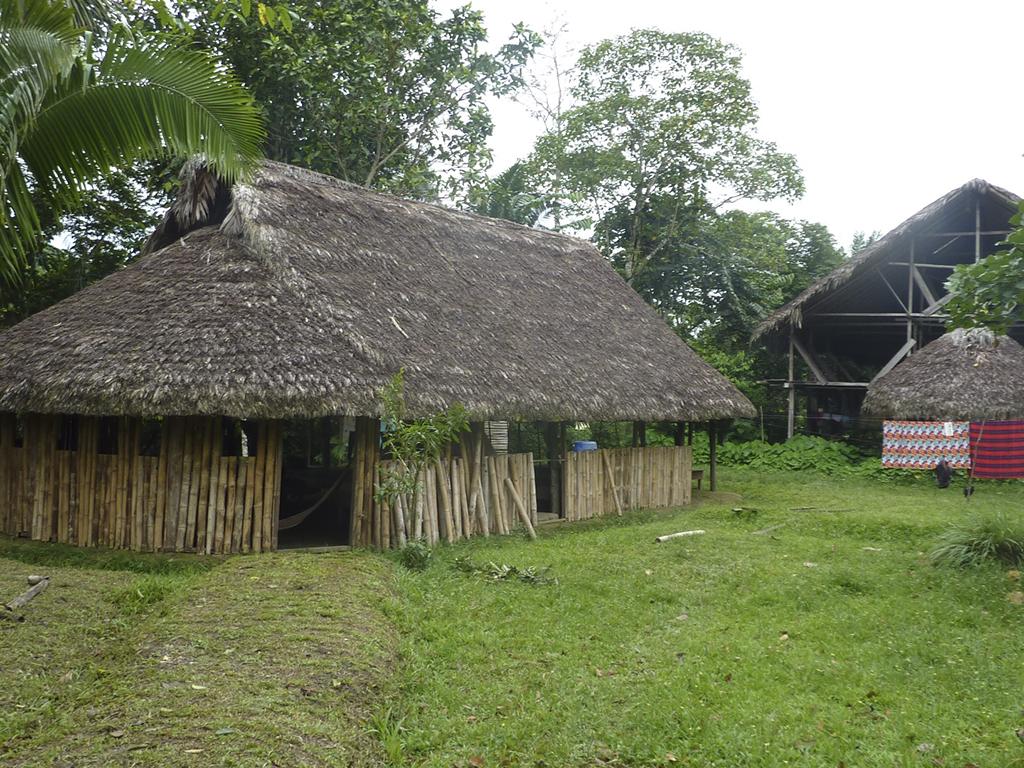
He inhabitants of this place put palm leaves on the roof of the houses; but when it was sunny, its rays pierced the leaves and warmed the houses; when the rain increased, its inhabitants were soaked in the water.
The stars, which watched the misfortunes of the local men from the sky, decided to help them and went down to talk with an older man, who was the one who suffered the most from the scourges of the weather.
La lluvia. Fue así que en un día, casi terminaron de construir la casa, pero a pesar de que trabajaron mucho, todavía tenían que poner las hojas de la cresta.
A esa hora del día cayó un fuerte aguacero y el anciano, que estaba esperando que se terminara la casa en el medio del campo, se mojó y estaba haciendo mucho frío.
Impaciente y molesto, a pesar del hecho de que las pequeñas estrellas querían impedirle el acceso, el hombre las desafió y entró en la casa.
The Origin of Day and Night (Legend of the Achuar People)

Nantip was a restless child. He jumped into the trees, ran after the chickens, threw himself into the water from the guaba tree. It never stopped for a moment. Nantip did not want to sleep, at sunset he would sit near the stove and holding on to his knees he would annoy the cat that slept on one of the three logs of the stove.
There was a time when the two brothers, Sol and Luna, lived on earth. Night never fell and women could never rest, we had to make cassava chicha all the time. The men, likewise, hunted all the time and were very tired because they never slept.
Luna was married to his wife Auju. One day, before going hunting, Luna asked Auju to cook pumpkins for her. The wife cooked the squash just for her, and Luna left the squash cold and green.
Luna was very angry and decided to climb heaven by climbing the vine that previously linked earth to heaven. Fearful, Auju wanted to follow him, but Luna asked a squirrel to cut the vine and Auju fell. From the shock of the fall, the woman powdered herself, transformed into clay to make ceramics.
After much suffering, finally Auju became a bird and Luna stayed to live in the sky, becoming the star that lights up the nights. This is how day and night arose.
The Shuar
they are the largest Amazonian indigenous people (approximately 80,000 individuals). They inhabit the jungles of Peru and Ecuador.
Tsunki myth. The owner of the waters.
He is a supreme being, a deity who lives underwater and has powers. It teaches the Shuar everything that has to do with fishing and health. According to some interpretations, he is the brother of Nunkui.
Tsunki. Its main manifestation is salt, but it also takes the form of all aquatic animals: duck, crab, etc., and in streams where people bathe -to visit them- that of a snake. For this reason the shuar considers the bath almost as a ritual, they perform it daily with the desire to meet Tsunki.
Myth the gift of fire

"In the Amazon region, a group of Shuar indigenous people did not know the fire and could not cook their food. They ate raw squash, cassava, birds and fish. They also could not light their houses on dark nights.
Near them lived a man named Taquea, accompanied by his wife. They were the only ones who owned fire and refused to share it. They did not allow anyone to approach their house and, even worse, the bonfire that remained lit day and night. To watch the fire, they went out to work the farm in turn.
One day, Taquea's wife was working in the field, when she found a quinde (hummingbird) among the plants. The quinde was with her wings soaked and could not fly. With a very weak kick she spoke to the woman: Please help me. I am wet and cold. "The woman was moved and took him in her hands, took him to her house and put him by the fire to dry.
The quinde had witnessed the greed of this couple; Then, when he dried himself, he took advantage of the fact that the woman was distracted by telling her husband how she had found the little bird, to approach the stove, light its tail and flee through the window. The husbands could not stop him and they stood at the door of their house blaming each other. Taque was furious.
The fifth went from house to house and divided the fire among the other inhabitants of the area. Since then, everyone cooks their food, and at night they build bonfires to sit and talk. "
The Cofan
![tribu en apuros]](data:image/jpeg;base64,/9j/4AAQSkZJRgABAQAAAQABAAD/2wCEAAkGBxMTEhUTExQWFhUXGR8aGBgYGBgfHxseHRoeIh8iHx4bHSggIR4lHiIdITEhJSovLi4vHSAzODMwNygtLisBCgoKDg0OGxAQGy8lICU1LS0rLS0tLS0tLS0rLS0tLS0tLS0tLS0tLS0tLS0tLS0tLS0tLS0tLS0tLS0tLS0tLf/AABEIAN4AyAMBIgACEQEDEQH/xAAcAAACAgMBAQAAAAAAAAAAAAAEBQMGAAIHAQj/xAA/EAABAgQEBAQEBQMDAwQDAAABAhEAAyExBBJBUQUiYXEGE4GRMqGx8EJSwdHhFCPxM2JyB5KiFRbC8iRDgv/EABoBAAIDAQEAAAAAAAAAAAAAAAMEAAECBQb/xAAuEQACAgEEAgEDAwMFAQAAAAABAgARAwQSITETQQUiUWEycYEjQpEUgtHh8BX/2gAMAwEAAhEDEQA/AEasMhXmKS4QCEpQ5YZ2JFXAGYPTRosXhHxAMCJktCAsL5gHU4UA1Nx0YG8UebxAoKc3LUpWn/jvreJMNiEzpjSwohIJszF7g/qd454L9mK2w5nY/GBwi8PNncq5y5YCWJKmcMyas17aGOOqxis5BdKncitRoX39LQ5VMSsAJUoUqCaggag0IIeEudcsnmAAoH69nSBBGIfiR23Rlw2chSsqiSkgjQs+3Y1jBPJSkgkkNQBmIfe73frAUlSVuTlQU8zgit9qK3bZqvE2InEBLtUEdA377wBkI4gqI4uaeISpkmWUhQSQpR1cORah+9IXYHhK5stRPMopDICmJZifiDObgNr2eaQqYVAEMlbkPWgOz/WDMSoJlpUhBOUucsx33U4d66DaDWaqEF1FgweeSuW3PKOZKcozACi0lvQ73jQ8PVnlypZzTiPgSWCTcDMTca7fWzLxSFmWQlprApmFSXIA5gbZhapppcQX4K4QkqmrClKlZwUk5WKthUl2oTTasQGjCqpYxRhfBk4SwFqlhZLqBmPQvbI/Q9ejRrjPAMxYSUzpTgAGk7bpLNrR1FJ2dhp+0egkVrBPdxnxqJT8NwVaJAkJmIYOWPmliUtyuiz1akaYngk5ckSpipakSwQlgtJY1IqgCqq/4i5Jcl3LR7MBUGc1oa0+UZKiV4gZyeRhc6QiZKGYnKFIopAqz1ZdKkHTUXiHCcF8tSMuRSkqcqBdJDuCOrC3d4d4zDzJExaGTmI5CVNyvYEW0d4WSp4RNyqBFbjaxDfCwFmakDJNRJuODBPE5mLRlSHCpjqVoGFH7u/pCKbKVKAWqY7hgA79QQQGpFxxMsGWHCi3MydSBr039dogm4Fc4FK5UlINaKc31SlZ+kTC3FTOJuKlTmYqbMYBSpiQ62JPcuPrEmL4vMnKYUQGABLqYJAYqZyGFos0zAeSpKSEAzsv9sISMqCtKACQKkhSzu6BCtK0JWtSkII82a3Kn4ULlFrfkzD1MMqR6jfjqVqetQVcxZ8PMw0yTMNELZ0I5jVKDqUq+I9h2YwHgf8AXMqZkIClJbKNjUdHALd94Z4jAITJnKSkDMQkDVNRnFHNL9qxTPUy1gSpJmlSy50Nm2/eIFK5gR+FrjaLTwLhSpc1ExSgwLpAsQzk/wAXjXh3DJeecHBQZSikn8zj16xRzBTUreBKulySTUkv9vHsNZvByFgEFCGcrW4F2sA7nRNSYyCXcu7nTvF/hVS3myQBMFSMr5xo3W/eut6Rwtc1ChQgqo4FW7AfJvWOvzuIy1JSyucFvk/2P2iseI5LAz5RYj/USk0UGbMKfEH9R2hfdCZcfsSqKzpUCgLUwqcp9Qf3eBeIJBJBSRms6mNBYO1enWN8RiCoZOcuWYrNX/56DvqYDmYmUCQuXMUwDJK2qdHZ+jDWLVR3FAObm/DpZCqhWQJKS4ZjT2MMccJYlpSPhFUuWZwx/a8I1445VNLKAFByFFRGgcqO1GeA8fjVLpmOW7B6fzF7CWk8ZLQ2bjVuQWyOG7FqOat0g/BqADqmlCQxygZi4eoD+laVhPhsUAKgOAMrpT9Wf2MSoxKQxCygu5ZyfQaH13jREJXqXbw34dlYtefLNTLDZlFnUdAnLQak7eojoglpQgISlKUJDAdPf33MIsF4lwwloEtSEoZkgMKB6lzQ94KPHMPpMQ9vjSPatngZjmNQojQB7gH7+UYSNiff6tCo+IZALGagBn+JNPnEqOLSFVTMTd3cHU94lmbsQqp0IP6mNioh3DbFh+sAq4vKDPMSNwSB96xEvjsgjmmoOnxJH1iSuBCOI4dOIQUKAJAdBL8p7/sY5JxLFKE/ymZSKVH4gKhutu/eOoTeO4cVE6V/3ptrrHPPHeIkTMTLmpIKinnCAGcBwXHRvQGLAuAzIDzPJONUUpd1EB1adAPvd4hky/MmJKSyQqhtmIHawAcnYE6Qt4WtalEP8TbdPtukHY6fLMvypa0hSqUqwo4DVBJYdgRa9LjowWPFXJhM7HJmYjDrSczzQou9BKNO4ZRr09kuCUCiW9Srzx6qlgfWG/DuBzc6CmoRJWEsFVJlqfTRa4zDeGMQFYY5CyS6uVf531T+VrwUECH5Mr01T5Jm8tST/wAkIKffLkPrBfDsWFIzKLCiF65SByL9gx7bqBB+H8LYkS1oUkvVSWSssSCkj4dXBP8AxjdXg+Zh051rSZTZZtFUCuwNiHBLVAiyyyipqKZ+OmS1BIVmIJs/QgjRiG+HQ9oyXxBUybnZKQfw6UY271gmTwlHKheJlhY/0ikLJNXALoAINxXXUERph+Dy1KcYkHRsrXDMHU5I2vFHaYI4rE9kY8TVISEjN+EEkAUZyQ1WFLxkC4TBy0lSgy8ugXlPsUmo7xkUQB1MdcCWKUMWJqgmaEhwQpdAolDgClyKNGuM4liZQAnqSQpJFNft3hn/AO6JSZAT5cwlZSUuB+FJFK7K+QhJ4j4oiakAIWlSFEOWZ60oftoyLJoiHaq4MjVxVLcwS/4VEWrqGhViZyQSpJKiDQm3oPe8CYgM9ALO3+Yh8zTSCBAOoAIBMM4sQ9CQSOof9zEkmcpIOUkAhjEJEeiZytGpuNMBxGYAUkukB+o6jtEWIxKVpzFIzvUiyu4NlPVxeBZlkkXIr7kfRo1liiuz/OKqSh3GPAcqp8sEBiqu1o3xPAJqX5Sw/aAeHzCiahTOQoMHZ62eLHjPEJQplSasCefcP+XYiKPc0KiOfgQJqqpAz2J69oa8F4QEzF+eghIBqbUNfTrHsxMmatMw+YFKykpCEEOwevmA1OrekTYXjPmqX/ZKgEqURnZgASpi2wMVyZIPg/DiZ7qSvKAbM9Hb5w1wPhZCAoLObUFm0hNhvESZZOREwJLMkzBRt2QAddNYaYjxjkdKpJBIB+MWKXH4diIgB9yD8z3xBwuVLw61hFmA9WH6xSpUzKQev3TWLbxPi6sThJhEopQCApWZ2Yp0YXLRTxGhxI0JONWpSub4ndmD66QRwdAJmlvhlLUO4EL5LvTYn2FflDbw+lkYpZDhMkj/ALlpEWZQnvB+MzZZ5VgAZrv+MMT10hvxTxfiQBlnLBKUlsx1SDvo5hBw+WhagMrHRjc7l+uzQTxTBzV2QpgE0elA1E30N9owQt8yvIeodh/EMxMvz5q1rmKdMt1EgMA9HtW4rAOF8UYrOtZmqOZKgzlqpamzUIO4G0QY/DK/psPyn/8AYTQ3KqfIQdwLhEtaEqmEhRVlpbIoXt8V/aIdqi5s5AB3PMfjZiDLUFKrLYuTdX6gEV6dITzOKTfMCvMmFlaqP7w143MIxCZOiFC1qACjaMB7RXpinL7l41jHEl8wpeNmO5Uq5Zydbx5Aomfe8ZBKEztnQpyknCSyEgkKUBQls3/1iPiUhU3zKPnUCnYU73b6xaMJwqcAP7UhI2L/AKAwww+CnA88uQE/7Ssn5phEvUhM53/6BNIYIJ60A9KxErwpPP4Kdx+8dWmYUscgBOjuz9xGuGkzG/uJQ+mQk09QInmYyuJyxXhOaSWlqA0cg6d96RF/7RxP5B/3D946pjsNPp5IQ2pWVU7AJIiTC4ZWUZ8pVrldvnWNeVql1OVL8K4hgMqaDfqT9I8R4anJclrEa6js1L+kdcTg30EIfE+KmYdGfIjI4SKuoqL6ZSNDEGVz6l1OeyeBqQoEqAAIPserOYzxMnNPJAJDJDjokA1bpHQPDypk+WmapMvIp+7gtbKNesM5SJUxRQlUtSk/EkFJI7h4ve1y6nM5UghaQyXFw8t+UnTy9uvrA/hnlM4qo8laQ+6kqSG9THWF8PQHOVA3JCfmY1ThUrTmR5ahoQxDxPKftJU4knCr/KfY/tDDjuFWqa4SWyS6sWpKQI6LiF4iSCtcqWED8WeWBWguRc9YP4anzAFFEsApdJC0Kca2JDRDlb7SiKlD4VKUrBTpISa1AFT8UvS+8CHwpOLBIIFnY13fXo3SOpz0hAK8mYJDkJCXLXZ6WgSbxVM5JOGkTAoUyryAHchQJFKOOsZ8plhbFzluL4EvDjMujgix1Da94N4Zw9MtE+WtR/uJQAzAkBYU4c1t7R0rBJmKH92RkVtQg9Q30eBJi8SmZy4TNLsDmRbdqNE8xMgq7lQwfCJUpRyyZi7g5lpY0fQa0gha5qQkS5SnAF0rJB1Zno8XpMhFHkg70IL/AMQDxebkI8vCrmdQpNP1ge8t3Iy42HMrKsSo5UmUXNBRQq5o5FB3hPiMBiVTMyCmUUlTq8wJoTQAhR9usXnBTM75pC0FndYd66EG8e44hA5JC1ua5SlIG/Ko1PbaIrFTwJa48Y5lHk4FYQkrHmf3CVLLuHYUJqXYwZP4Tg0hijK/+8fqIZqxkhJP/wCEtJ0V5NfdvpGyuISEsRLm10Ek02cN8qiCHcZWwTmq+GkzMqQDqwULPu5EZHWEYSTMSFAJINWWlm3oYyNnMZNv5jhGMZNczd/1eI08UB+Eudiox5lTettvvSNPKBs49WhHz/mBLQhWOIqT/wCX8RHiOIlIUakAE0J0FhSIJksJBIQKafp3hFx+espRLkHKuYTUkhwBUAmxcwVXLdTYs9Q/gfiOdNU8xCUIPw5VuRR+YOSza0+cPP6pN8x+/eKDgOITcPMMqfMCgEAgOVAPoezQxxXFhNKJcuZlzOpRAD5aUBVZyeljByuStw6hmU7gq+5J4owyp09AM4iWE0CSxKnL1NAWy1aAeNeJ/LQnDqHmqSAc6i5BPwGqanJc6vCPi+PWmaUKXnyUBpX2oD/MG8HxYKVLdQWoaJQ2ZIAFVA0pFkECz1Cqqn6R+qP8F4xwqUolgrQMvMcgyhRqfhL3eoEJeC47DYWaucFLHKQBU53I37X69IreD4XOmHlS5Jo+p22B7tGsrBf3BLmuklnZjl7xoKo9wbbj67lr4t4vRiJJQUKqQWehCVOQWqxAiLBeI13wklKFKASZYswfmuBmq3ttGs3gElUsGUtPIApTBTNZTuom5Fo3HAQhE5UhaVqVLyMQ9VzUB0u5HI7nT1jKlOhNeJ1HPUK4rxVGLw2WctMtSFOpLmqkgimV6HQ2rejwgwHEcPIWiZLRNzpqyljKltQUhyC9jZrl6BzuDzZaTMdKgA5Y6OzsQ7PSHPhdUkBQUApzU5mJGgqWbpr6RbFVUkczKoS208RjiPGxmJSknICDnqXuzAiPOG+I5cpaUpW6KvQkp+GrtWx+UDz0JlrnqmSZiQuvMlvMSwqklNjU03hQjDrwmXzUSyZozBySySAR8LOOjtSIqBwTUhG0bb7lz4xxqcoITIWE5qlRCXys4KcxAraoifAY2cgqTMX5iEtkWQnMXv8AC4I69YrM7BTgBiVZUpygUA5EigAD0B7GFk3xbNBIQRk/4jm794xsJ4WUcYVPzOkI4s4qD3o0bDiD/AXrvT7feOacExSk4mWrOVCY+YKal6HS7ERfP6tBZgGBo1+9KjWBZf6Z+8Wy5NhjFXEDvXZ/4aIzxEkO5L1YNEIymoepe/2w7REqUCbglrfVqekB8kwM3uFjiamoT2/wDGszi7XU2jX+V4R+IJ6pchSkE5jypDEsSW96/SOdYjDTgt3KlF681xeqgC4hnCpcXcKhLixOvf8AqT0FerUjIoXg7HKmlSJqyyeZJJ3LFztaMjGQ7Goyi4BozoWJnoQgrJAADEqYNteIZXF5C+VE1K1CtX+Ti3WK14kmeaqTL5gkrdQ1oOhvfaIuKcLElAnSkqSUELIWzKDCg5nNLjvAV0y1yeYRcDMpIlwkFJqw63+hiu8V4bNxWJDBQly1MFgAXZ6m+oYfvD3Az86UrBBcUYlmb/i8C4ZcxUxbLyoz2Gppb5QbTptJBMTz5Hw0RzBVeH8ImeoTlTQrICVJKSGOpKgW7NZJML+O+G8OnLMw09SiDUKAfK9WUnlNSNBeHXG0TJJClLS6hQNVgxDv39togw2Fm4pM0oKAtCXTRgVG4JFnG8HXNtIB6naTEuTB5OmMS8JwuHSlXmFD5ieZCVE8zj8QoUwo4bgCuauXLP8AaSSTmdmegtfqNjGuMK5ZyYpKkLDcpBSohnDppRmrDHhHEwoEBwxe2jBv1hrDiV8tHoweVtuIMp+r/wBdwqbOmSWRmKgdEigoLO56bwPguHCeVTVLCQSRUgO1Lem8EcVnJ5cxAFydfTWIcBj0JKSmWlQYtTeh+b+8Z1WDwsSsJpsozKN/fuNeGcOlJxAkLS6FoKgyiUqs4GoNQXB2jTiWAlyVJTIm87nMlRBUzDlAuX3+yHi8cpKJnllMtQSQktYE2FzmP7bRT0ZkrBWVJq+Ya9jvFIyPj65mcwZMws/T9pfU4tUxKpa6BLhQUSKOHetBo+jwV4b8Oy5plzJaGQqYJT5nc5X3owBPrFM/rsRiitIQVuQQEuSGFHIvQa+kNfC3iGZw/FJBUfLMzLNQqoKXbM35hcH0tABgA4uay6leAo/mfQWJw8sYfylpStGXLkLM2gD7DW8cD8TJM3HJCZJ8iWgISVB2SXIKiH/MwrYCOt+IcUqWlfM+X4Sw3p3LMI5qvHma4Pt67WjWhZtU2QAUq8fuYpqCuHaTyTFGCxKZgUgCpzA5lrynlsQNKfOFBHlpTIXLeZZuUtme5ZwdYtnC+EqfzPLGQlnAq43Oo+6w2xAE5ICkJJFApgojs9cpGkWVCWDGC4NbeblBn+H1ISVvygOQliR7tGk/j6yESpAfKKqKRmJ9XYdosy8CgTESkyzXlcKLVNykHvSsIky/6aZMlTZaZakqPKToRysrUM1f3jAbcLIuZbTJYFxXxLjM9SfLJILnO1HO3ZtOsWDwjInpQsLBADFAIc1d2rR/06xt4dwSMZLxLEebnBQl7BKWJYjV2gbj+MnSMNlIfzjRYJokXDmoUTcbPvFulgKB3FziTaRDeJcUl5VSs7lmAzWPoSKHTpCuTxGYUlJWUCoJNGfY6xVVqf8AeJZuLUsAHQNrXqY2NOB1CYXRFqpbPCmFkhKqoWVBiHqAOlK69hHsUsTSDQtGRjJpi7XcUbFuN3OgeKZRCELllLIUCBmqc1mDBxTrBOG4Li8VI+DKCl3UaNQnSlKxthSCVBQ5VMFZaKO4zbGLfh/FnlywiXJCQLczOzCoys37RFK1zO83x2dWrGODK1wTFS0S04cvLmporMQQS9qAEfP6QPhcWJeNQFqKZbiYKZkpZPKVAGqcwS9RSri8ecexBnTfNmAZiADS330hRisTOw0+TiQ4YhSTUUTQh9iHHZ4pa33Jq/jxhwBiOeLl84+j+rQSMpW7saOGNRe5YesEcCkpw8pEoAZ1AlQF8xOw2DCE/EUBf9+UQqWsFSmzJcAZipOYAMwJIemUVdQTBJny8KFKnuAMxUWzZiCQUhuU8wIKSfyukgwJkb9MTDipWf8AqQlXmolzFBSykFyFuHJAcqvTRPKBQaxVMBMUhJU34gD7F4cCacfjVLyplpNkpAASkAsABr13JMZ4g4WJWQIJUiY1TdydWA0oO0NDKFIHuACE23qV6fiVLVmUe3SJsFiUpfPmI2DfbxFjZQlqZ39IHSp42x38mYRjjbiGzsTnA/C2j0fcUv3iFcxqGoMRFVItnhLh8sI86YgLKiyQoAgdWOsUKWA1Op2je/MD8IqAztMCVPc2NC2ouY18UTJfnSpvxP8A6ge+UixvUUeG3FcKnz1LSGI5SwDUABpa4gAcFM6bmWpwA6g7OHAYdXMKq6nJuudjLpsuPS73Xir/AGjji3j5M8LkmQBLVRKsx5UsBs7g1vCnBzFCYpPZuou/6RD4k8LiQBMlzM0sv8TApO3Xpa0R8Jn50iWf9RA5f9ydu+0NadVwPuXgHuco5BqcfH8TsPhbiMg4ZKSjMACDQcxchTVrWkF4vgnDVAZ5OUAvyrUlj2Qu/pHP+BJkTFS86zLUASSTlZxZ3uTWwh3w5Yl+YgTit3DKJN7NT2rCeR/qJnXxaUeMCZxLDYPCrTiJE4lIzhlknKvKQlgUg71L2Hpz/iHiGXOnJzozIlgJBHxFrl/oDbpeJPG6ghKZaVFWZZUo6A5RTZ6uW6QqkeFsSqSJ6UAoNWzDM27ftDGNhs/eKZkYNtqdI8E4aVMxS1JQUoyMlr7O7BzcxR+PYl/OEwFSRMICdlihP31jqXhnFo8vCoASkplDMxq5Cbh6Op/Y2eOU+LcSTicU5Df1E1hcUUW/SJjBAqFzstAgepVR8o2SpP5fmYIwkgLmJSSwUWJ2ixzfDoKAUywXJAMtd2F+b7vBmyBe4ouMt1I/+nGBkTsehE1igpWMiq5iUkADrUn0jIruKlqkzSAohSDQihDVBprHkbEHtMvonDOU81nLCo/iCJk1LDISVC1OusT8P4bNUZk1Dlsqf/Ek+9IZLTN5RlVzPp6ivbaEkCEcnmd0/KZVsbblTx3mApzBQBUHJBAbp96QRjcUicsyvhzJyg6UsPaGuK8Nz5hLsAXFTqXa1PsRXZ3DFpExyykFFeozOe0DZsZP0t1FG1GbJy44iZM6fhJikBaklw4ulWxymh6OKGNJ2IWsqdSlFanLknMo6ncvDozpWLSJc1WScn4VM7hqgj+aROBh8GnPLBmzGbMqwPQC3eGfJxVcxbwWbB+meYZCMDLStb+cshxsnbvvEmKnFclKifhWD84qWNxi5qytanP0h4me8kj7+7wF0qmPcIMg6HUT8VH91Ta1+UDu0F8XDLdrgEewgEmGV6EUcWxnqlRecDObypaaBOUl30A+R30iiERasNiXmoIBHLVxSopGXroxTPhfJWwWRzLMvhCTVMzLWywrX/ckF+7DtAy5XlImnOgqysEg1NQX6Bg0eZJjbjooinZi3eNcRiP7ZCUNSp0+lYXGBbu5b/Oa7LiOB6IPB45kOMmpXh5mcskZS/UFz8i3rCHgvDcROK14dBIS5UokAJT1JIq2gLli0PuBl5fMkLAFUkCvoaX3i2cG4lJMtYCAhRzZlcqRV9lDvY2hpjSWepPjU/tHoyp4Xy1TCJlFBviKgFCt21d/eGM/ywsGWrOohiXJHoTCvG8OJUVJJoQHAJvmqwBtl/8ALtEkmSUJBmFTkOAwHq166E6e8c9uRPUAn/UnEF5vj7VGfDnZdAcxLPUWIev3aIcXjVSZXlCpSALN7D6Q68P8KMwFawrKBQJDlt2F2v2BgnxWPPloTIyFcmqQQOYahygKSdaH+D4MDZPqUWBL+U1WnWsannomUvi3EFypZmKOaesBIyqfKHLOQb3pvC/g/hKZiiTNn5VKdbNmJJIcmorV/eJMStUyaoKokMWd+YGmg29oYcFxZRPSrd01/wBySPqYLkLK1ns8/wDUWwaTG+Eseh1/zAuIeBJkg5kqKgkuxFWesLuIY9KEABJCgaM4sN81m2AjsExLjMolSme9B26W0hFxHg6JgIKEewF/nuKwy2LcQZyVylAROKzVFRJNyaxkXbjHhCXKGbMWYmnS3uSI8gb5FQ0YXHhyZBuAl+8D4siYtLM5SfWqTFpUv+0hYYFJFulC/wA4oXBeJiSrMpiCQBvd+zXi0p41IEqcVTEhKVEuToWLjUh3tHmtTiffYEbxZA68w3iElUxK8vxKBI6HT9I5rwzCTSqd5qcoLAOGfK9WPoXMWkf9QsDLRn8wrNglKFOf+4ARUeMcX/qT5qAAldQgOoipvZI27g1g+lwZQDYq5nLkAEo+OUPNUpLitIhnT1KuonvDfjWGDBQADXbUUq7b/WEpEd5CCIgrEiYY281QoCWNDXSMIjPLJsLRZ5lxnxKeFy5YoCkMdzaFcMscgFCCBZKXPVqwuaK27eJN27mbSJRUoJFyWi3YHDoZbqyqSyQDqAkNW132ircPUBMSSzPrZ9H9WiwSZhU6iQXJrAM06Px+Iu/DEH8RxJw62dJN2pm/RxBE9CVK505ZjGrMlTanbuKb6kKMKulwkPe59olmgZnzOrqBtr9bwuO4fUvnwgZCwP8At5P7xnwzCKEtbIVyqOY7a+1YYYaWqdJVLlmWk7AjPMILgBISVFvaCPC2GKJYX5i3UAaFwBpQ94Am8RVKnzShZTmoVJoW9PXWOppco1KHAR17nJy4Thb/AFA4v1FeExaUlcuYFJUFMxLHlzDbvbaHHCsAJswn8RdZJY0vygVLXdvpGysHhcWAVASyglMhCTVWVClErOpKsld6DWIOKSpSA8iarOhaSgmry1SwSHH4kqcEHfvCj6By9KI6Pkd2La5/mXSfjTgwLF/yrGYE65VBSVoNwoAEVG8IU4oqUVqLqUXf7pFbl4ifPWEZEmWLBUyYwNPhJdIL6ACkT4ozJS8sxSEMHOUkqIJszkN/uYMB7uYNQmAbSvM52bAXG7dxNcXgSqZOUAyRV+p0gPG4GZhinzOQqZQFcydidv01aH8viSZSPOIClA/20NyoJ/Eoaq+7ilLn8Qnz5ilzF5jmL0v/AAIRyt5HLDqdjQ6nJ41Rhx6/MsmH8QTEpY5VBtsvuUZSfV4ZYbxOkllpUDuCk/IgH5xUZcbrHNSMB2HRnUyafC/JUQ/xDxDzpoAKggAUNKuasLbXMZCnBNmU6gVPWoo0ZGHJuViOBFrgRxPlkratTSiWFLAAERFxPDhUkpK3UbUuR694JnSSw1qxfT7qPWBcThgRdWbQAitrb+kZQ82J5C66lWl4YZVO1CCN6g/x7QVgQchDsMx07aaxLjsOM1AwFz7U9HjaakyyxFHcde0Nk2IQ8iDYlRPKQT1ehq2v1iPE8MSLbQXOnEsWApXp7lusH/0aikUoW9oGz7BFM2Tx1zEuGwgJSlSakO8FYnhzACWkk6gQauSkTRm/L+ojzFTAaJzNuAR+kD8hJFQYyksD6mvDkImYiTIUCsKUhCgwZgwNvUvrBXizwiJSnw6VZACVuXZg/wC8LfDUwy8TKUv4UKKn7A/UtHnEePTJyluslBJIBJAvdgfq7Q8GtY8IzleBHQhZmEBSQSAA4oCYFMoIJQKBJI9iYaeDeOTpi/6ZRzpykpe6crWLVS2mjQn4lxVXmTAEyyM6gDlL/Edv1eB513KKj2i1K6dizexJMOAYZYDDpXMCVpBB/CpSg47pDu7e0IuFYzMopmKQn8rgJHuB9YIHFxLmkAFbUBSvlOtxVn63hRka6E6OXU4MmBdx99TpRRKCWS6dLj9YovFpSkzlhl5VEElQbSwjfA+JS4BFCbkgBOxPQGLDip6UqSFkEEOSzjm10LVZ9x1EVgyvp8m6olqsiZU23x6iJCAAA9YDnZgoBNSaeppFoHCsOqtC9ikkD6xsnhkpKnBZQ1OvvHVb5pCtBaMUx/FsTd2I14PKTKlhNCNRvFQxkhMuaoBQBOZaiR8IzU12cuGLdYss7FJQm8UbETfM81JOUKcBrsBc71B91RyMTl2JMa+RxquNajLDz5JDlyEkgFSgQCLgoyhraE+to0n4cMwPUcqBVX/AkFq1ERcNmIBynVHmLc6kkuPT7u7fhGAlzghQOUqUWygUbdPw2B2PWG0Q7jXMFg1LALvPHqI/IUlWViWuRbeCpXD1KNrEV9fneHOA4OSqaErDAknMjmsNAQCLbQRw/hfICqanKXcJQX0epUQCG2NjG/EPsZ0V+QUe5TFyAibNAsF371/WMjZWIIVMnZRkXMUUqzVAq2Yakhj7x5AHH1GpytRmO7iPcXiQoZEj4WP20KUoUvMoVI1dgQ7XIBg0SioDqSDQ699Da0aT1JEtgkABx3+6EQJTXUTKkCDzC7gVu5b27gVrES0rIAIJCS9gz9322gzCYFS2XzEXZmbSoA7wVLw6UkAE1IcB2dy3YVP2I3uAlUR7imbgwBUuPl/n76QWnF5E1qAGAatBY83zES+Qc5ZiADmD931+m0CzFpUmhBUT7Edxtr1ijTdwbAH9QuBz55XMzgAKyj/FTu3zieVj8ySkgZi2Vg9/Vg1Y8TIOQ1If8wGmtNP2gfENy15jR9Kev36UshSJoqv2kcjDpKv7hoanr7Gx97wjmYCYlRTlLi7VHvFkmywEKLOQSRc6ah9te0KJs+Y7hR+v1guMsbqMYCnIe488NiXhQZypyUrKWSwcgnUBjansY243IwapGeSr+8DzkrLre5IJoS/1EVnFYtUxISrLQmoABL79mibhUnOS4fKA/UV/T9NoooRyTDZcqVQHEhXJZLlh3iSRhqjtfTeGc2RLmZCSyEu/W1ja51jTGzUZuWwu38XptF774gGrbYMl4VJKl+Wz/q5+/eHHGZrTZikspImKTlL2BOUhjS5GzFoWcNWUqzpZ2BBGhBHysbfSCCa97x0MOmXNjBMBuIkauJFBcPlOhuk7Hp1+yTI4olVDm9j326wHOwoKh1B9TT9I3kyWAajBvmf0YekC/wDlKXqNp8hkQQ7E4pwya3F+kLAHmqCuUFXr12o0MZUhx/8A0/prFckBTFDKUoaNRrV6nfRovUaRNOgVf8wOTVNqGs/4lpxvDkCUJlHQkpBGoYAjr+l94sXA8PklqJDEJag1o7NFeCiZEqUX5lBOpfmqxN4uMhP9hZv69f4+UGRVqxMGxxIZaPLxCTXKuh7kezNtEMjCibhlygWXzAF7Zk3G0GeVmljdNj2/av0jXCTRLM1ZoEpWq35QS0W0g7nP+J8OVhymXMIIWARX4dBS3r1tGRnF+LKnqQpaMpAYa0ZxVu9gP1jI5TkXxNZTubmPsJKDOktmoxLAlnHoK/Yj1eBKxUKBFg7UA6Udu7PG/moGUCixal320f8AxBIWQlzQioUOpu0L7jc3yG5itaJjgAK0FHNSBUEAPpEc+VMTMJCcxADuR+o+2hjNKnaWg5AaMTb57n7MbpMsJIvqcxDvvW7fpF3IeeIuxEtQTyg5iWYB3t9LOdPktnYaY+Z0gNQ6Mem99u8PQtIqTcHKwoNb3JZ3AO52cfFJIGUKdtQD8i7DT3jY6k8Y9xVOQsOghnr8gbXJ+2jRElQSDRJSdXs1WDOGYe8TzJC15iVV+v8ALfU9G0SVhKXC1M+WnpStX2+zR4mClTREgKIlZyCqp2rprTTuIrnGpEyVNVLmUKdKtXu0WmWaMxHqzM5sKX3sx9PPGvEJM2TLLIVMAZwoZh33F3HZjeNY3IavvD4calD9xKaiHPBTVdrP9YRphrwaYUlRGgf5iGcgtTAMLEZ4hOYhJADfzXp9axEuSQosMo6varbdILmrYmps4/iw6xBiZ7gkuSLAD0+n6wsOOIJR6nsicczEvs9x07D9R6TPUCB5C3Y1zVFT9BsPt4nO+ukd348/06/MjijN590nZ4nlqF2iPE/hPUx7LU1+0dGoAm1haVMlR/2nXpvpFaxRS7B0vtvsen7RYJ8xpSySwAIPqKRWVMk0OYK0ajj9TaOT8ibYCEwCgTJsFxHy1JmHMrKapBANmDOD3tvFrR/1AkeUUK8xy9fLD1356dwTbSKEibzjMCAeh+2/mGsjhoWxSCeUtShZj60MJDIUEfxrY+8v2C8TyRLJJSM9QD5j76SyHvq1YqE/xFMnJUgHKVVUz0BrRy+m/pA+GxIf8KA5zOgPq37NeJZeDJWpaFJoxuUvQWA9a9Yw2ZjwYMsPQqLJyluCVApIcNUBvvTt0jIZScOl00GYvUOC1bH+RbrGQEuJWy5bFIIS+VyosVfl1Yk+9qR5LKQ63Bclw1ugA263j3Czpicyg5DcwIYEXHe9nq9mMRLnA2SGs+Vm7gkU7e0DIEOarmE+eVNlVQ2AH8adf8Lp0t5gqCHetyxZ/wCIlw85CVl3DhikgN3BbqadTG2JyAHIRzOQSb2Oztf+GpVwW4GYAUu7VLFjYeu8RS6Ac1WJs2vfcgXN4w1JKlKUWGhB7sKdX0iNcxgVJOYVDP11OhFnf5xYmg3M2VNAYslhfpQ73p9PeDFT+bYmgswO3aIsRPzJDhklRCgQzAaj703uFOnZQ6TUVq1g7t9PusIuYdjdSSao1c01bQUv6wl4phwpjRJDvdm0pv2p9ScmbmDVA7XNB67NAmPw5KSARQhy5YX+nR/WN4+DBLwYtGGTldS0js5PyDfOGfDTLDEBWVyFL6tS1h0r3sy/DYQTF5CwdmfX9GhhI4cwJY0tW/X/ADvB3YVU0zDqGTsOoggEg60aj9uoiTD4ZSEVZQ1Uzg/RrHb6RBLmLUHUCgWcmp9NN4OwkmeUsKi4qDXpXcQqxNQIsmoXwxSVTFJAyhQUkU3BdqtSF2JSUkpU4I+6QXwPMcTLC2BYgsRVkq9Xpo8PuMy0pQrMElhRxroOm0dfQOUxmayd1K7i08ojRNQD7xPi0ukesQ4EvtHYBBi/9slxcr+yoM7sAzOWILAPUsDCjD4QjlU7itH0Nj3Gm+7vFixUvLKUp2AIr3I++zwsyEsldndOYGooX7EG9escP5F/6tTeL9MUTcGRQBxYggMDpax0jbAqGGmFSKuks+9yNNoLEpWd0EKKRzJN27pNR8t9oiSfM5MhZnFRS++v+YR3XxGFYobmn+pOVzAFbF7MSP1H6VgqRMUmrBNAk1uRcmm4JpbrCuRhVNmNS4AFNTV3OzdPeMmJVLUEipJr+nzf1iyL4mSSTcsicQipBo3Y0OnfX+IyESSopo7G2o1oafbR5AvHM7jL2uQKEH4qa/NujWrasQT5UvKxCVga0qbj5ft1jVeIKgh927sdvSMxC6qBJoup7DMzUp32iG4y4gk+aoghwNi+u32N66QKZjB3dQNrm16Ut9OkacVxflpDVUpLpdmAYO/VwTbaEkqUZqgCouo6nYU9haLGO+YLx8x5PneYhJQoqAdgCMwbprvfW2onkJBLJDFJCyTqGDghqZqi70Ja8Rf0iWEt1ZqE1p12L1v7vBaZASKksaM/3vFEgdSiTBP6TMpRzOp2NAyblgKvSPFpQDlYatmJAZ9GFC+/zguZOzcugLHepuOtI0lZFTEuDnAcbMk6/ttGd0yDcDMlKSybVcWbM1RRyALFtYGny+XnIGqQBU2qxt33JhnjLCiWNi1crfI9j9YhBSJcycRzMU0/no/7RQapXuLE4N1J8sE7E9e3e+g7xIiUkFSbMKUo5DBzrWtNolWoulQ/FmIGzUDjVo1w8xMwAgM5DVar1Pq9YISTKYnuRoRmcFyBRwNTQW6H6+kKZc8shPM5ZgbijMSO3Xl6QXgSAk1UQDqXYJOnrBHBsM05CCo8xLNowJGrmj94vdUJhXc4EPwOBWlYmrVmWigU1unW5r1gXjPEBOSrKcxSXypcDau5/mNuO49Ss8tNEIIC91Et8qwBKQkBgGCpWbs5t2iKzqKuOat8anYq/wAz3E4sKSCkKCg5FBRh31NLaRfOE8Nw6mC0pCtCSz99Hjm06dkSkEZna+nY6F79o6RhC6Ur/MLR09PkZyWPc55r1JvHWAQjBAJSw81NAxFlDQ2tFClzbPUJpRTcpbs3rTaLP49n5MNJSPxLzeyW/wDlFMwk/KWqXf4q3o1TZoV1Yt5LIjDGIAQJiXJseguQbkBi7NreFykJEwhAWlRq2hqxYj8JoNINGOGZKQGcvva9z1b7rHiJfOlLJql2qwBLXBFf83hVZrkxfOUoZiMxzU+J3q212YV/zLVYCiFEg1BelCwHRyY2whCyvK4CTY9quS+3r84Hl4tSCtLlg/r3+6xvmZIkqcSpIamUULip/L6ivt1jIjmF0gkWZ+theMitoPck/9k=)
It is an Amerindian town that inhabits the northwest of the Amazon on the border between Colombia and Ecuador, between the Guamués, a tributary of the Putumayo River and the Aguarico, a tributary of the Napo River. In the province of Sucumbíos. Its territory is distributed throughout it.
THE HISTORY OF THE COAN COAN
COAN COAN is an underground being. He has a house, as we have. He is not a god, he is not a monster, only a being.
When the Shaman (wise man) needs advice, he always looks for that of COAN COAN, just as if he needs to ask for a favor for the community, for example more hunting or fishing. COAN COAN belongs to the Cofán people, it is a part of our life.
Like any other being, COAN COAN needs to rest, sleep ... when it sleeps it turns into rock and its blood turns into oil. Oil companies kill COAN COAN when they drill to extract black gold, COAN COAN breaks into pieces.
The Kofán people cannot allow them to destroy part of their lives, they cannot allow them to kill COAN COAN, this is the reason why in the Cofán communities we do not accept oil activity in our territory. "
COFÁN HISTORY

Before, God walked in this world with his mother, nothing existed. Then he told his mother to make plenty of chicha. By God's command, she started making chicha. When she started making chicha, he also started building a big, but very big house. He built long seats and a table, he also surrounded the outline of the house. Then the mother said to the son: “Why this big house? Because I don't want to make any more chicha ”. Everything was prepared to call people. When God finished building, then he said to his mother, "The time has come to call them" and he called them but they did not come. Then God called them with a shout: "Everyone, come and have the chicha that I have prepared!" After the call some characters came out of nowhere with
feather necklaces, tiger crown, macaw feather crowns, their faces painted with achiotes, their bodies covered in varieties of plants, fragrance of nature, and each had bass drums, flutes and prowlers to celebrate.
Everything exists in nature, they are our brothers because we were created by
God. For this reason we will always be guardians and conservators of everything created.
The Cofán man maintains a mutual relationship with nature, his way of seeing the
world: that of the stars, that of the invisible and we, masters of nature who live
inside the earth.
With spiritual and natural knowledge, Mother Nature has created with
vision to heal, preserve, guide, teach and protect this wisdom.
The Achuares
They are American Indian people belonging to the Jivaroan family like the Shuar, Shiwiar, Awajun and Wampis (Peru). Settled on the banks of the Pastaza river, Huasaga and on the borders between Ecuador and Peru, the word achuar has its origin in the name of the large palm trees called "Achu" (Mauritia flexuosa) that exist in the various swamps that cover its territory, Achu = Achu palm trees, Shuar = People, hence it becomes "People of the Achu palm tree". Locals translate achuar as a swamp man.
Legends Tsukintza and the origin of the Achuar houses

He inhabitants of this place put palm leaves on the roof of the houses; but when it was sunny, its rays pierced the leaves and warmed the houses; when the rain increased, its inhabitants were soaked in the water.
The stars, which watched the misfortunes of the local men from the sky, decided to help them and went down to talk with an older man, who was the one who suffered the most from the scourges of the weather.
La lluvia. Fue así que en un día, casi terminaron de construir la casa, pero a pesar de que trabajaron mucho, todavía tenían que poner las hojas de la cresta.
A esa hora del día cayó un fuerte aguacero y el anciano, que estaba esperando que se terminara la casa en el medio del campo, se mojó y estaba haciendo mucho frío.
Impaciente y molesto, a pesar del hecho de que las pequeñas estrellas querían impedirle el acceso, el hombre las desafió y entró en la casa.
The Origin of Day and Night (Legend of the Achuar People)

Nantip was a restless child. He jumped into the trees, ran after the chickens, threw himself into the water from the guaba tree. It never stopped for a moment. Nantip did not want to sleep, at sunset he would sit near the stove and holding on to his knees he would annoy the cat that slept on one of the three logs of the stove.
There was a time when the two brothers, Sol and Luna, lived on earth. Night never fell and women could never rest, we had to make cassava chicha all the time. The men, likewise, hunted all the time and were very tired because they never slept.
Luna was married to his wife Auju. One day, before going hunting, Luna asked Auju to cook pumpkins for her. The wife cooked the squash just for her, and Luna left the squash cold and green.
Luna was very angry and decided to climb heaven by climbing the vine that previously linked earth to heaven. Fearful, Auju wanted to follow him, but Luna asked a squirrel to cut the vine and Auju fell. From the shock of the fall, the woman powdered herself, transformed into clay to make ceramics.
After much suffering, finally Auju became a bird and Luna stayed to live in the sky, becoming the star that lights up the nights. This is how day and night arose.
The Shuar
they are the largest Amazonian indigenous people (approximately 80,000 individuals). They inhabit the jungles of Peru and Ecuador.
Tsunki myth. The owner of the waters.
He is a supreme being, a deity who lives underwater and has powers. It teaches the Shuar everything that has to do with fishing and health. According to some interpretations, he is the brother of Nunkui.
Tsunki. Its main manifestation is salt, but it also takes the form of all aquatic animals: duck, crab, etc., and in streams where people bathe -to visit them- that of a snake. For this reason the shuar considers the bath almost as a ritual, they perform it daily with the desire to meet Tsunki.
Myth the gift of fire

"In the Amazon region, a group of Shuar indigenous people did not know the fire and could not cook their food. They ate raw squash, cassava, birds and fish. They also could not light their houses on dark nights.
Near them lived a man named Taquea, accompanied by his wife. They were the only ones who owned fire and refused to share it. They did not allow anyone to approach their house and, even worse, the bonfire that remained lit day and night. To watch the fire, they went out to work the farm in turn.
One day, Taquea's wife was working in the field, when she found a quinde (hummingbird) among the plants. The quinde was with her wings soaked and could not fly. With a very weak kick she spoke to the woman: Please help me. I am wet and cold. "The woman was moved and took him in her hands, took him to her house and put him by the fire to dry.
The quinde had witnessed the greed of this couple; Then, when he dried himself, he took advantage of the fact that the woman was distracted by telling her husband how she had found the little bird, to approach the stove, light its tail and flee through the window. The husbands could not stop him and they stood at the door of their house blaming each other. Taque was furious.
The fifth went from house to house and divided the fire among the other inhabitants of the area. Since then, everyone cooks their food, and at night they build bonfires to sit and talk. "
The Cofan
It is an Amerindian town that inhabits the northwest of the Amazon on the border between Colombia and Ecuador, between the Guamués, a tributary of the Putumayo River and the Aguarico, a tributary of the Napo River. In the province of Sucumbíos. Its territory is distributed throughout it.
THE HISTORY OF THE COAN COAN
COAN COAN is an underground being. He has a house, as we have. He is not a god, he is not a monster, only a being.
When the Shaman (wise man) needs advice, he always looks for that of COAN COAN, just as if he needs to ask for a favor for the community, for example more hunting or fishing. COAN COAN belongs to the Cofán people, it is a part of our life.
Like any other being, COAN COAN needs to rest, sleep ... when it sleeps it turns into rock and its blood turns into oil. Oil companies kill COAN COAN when they drill to extract black gold, COAN COAN breaks into pieces.
The Kofán people cannot allow them to destroy part of their lives, they cannot allow them to kill COAN COAN, this is the reason why in the Cofán communities we do not accept oil activity in our territory. "
COFÁN HISTORY

Before, God walked in this world with his mother, nothing existed. Then he told his mother to make plenty of chicha. By God's command, she started making chicha. When she started making chicha, he also started building a big, but very big house. He built long seats and a table, he also surrounded the outline of the house. Then the mother said to the son: “Why this big house? Because I don't want to make any more chicha ”. Everything was prepared to call people. When God finished building, then he said to his mother, "The time has come to call them" and he called them but they did not come. Then God called them with a shout: "Everyone, come and have the chicha that I have prepared!" After the call some characters came out of nowhere with
feather necklaces, tiger crown, macaw feather crowns, their faces painted with achiotes, their bodies covered in varieties of plants, fragrance of nature, and each had bass drums, flutes and prowlers to celebrate.
Everything exists in nature, they are our brothers because we were created by
God. For this reason we will always be guardians and conservators of everything created.
The Cofán man maintains a mutual relationship with nature, his way of seeing the
world: that of the stars, that of the invisible and we, masters of nature who live
inside the earth.
With spiritual and natural knowledge, Mother Nature has created with
vision to heal, preserve, guide, teach and protect this wisdom.


